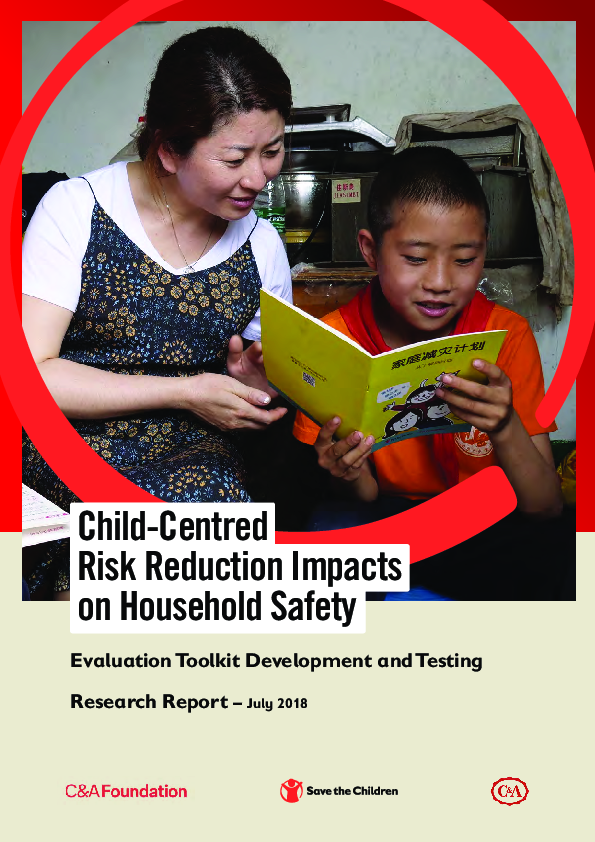
Reports
Child-Centred Risk Reduction Impacts on Household Safety – Evaluation Toolkit Development and Testing: Research report
Publication year:
2018
English
Format:
pdf (4.2 MiB)
Publisher:
Save the Children Switzerland
The purpose of this research is to understand and identify the potential for child-centred disaster risk reduction approaches to have measurable impact on household risk reduction and resilience. Disaster risk reduction advocates promote educating children, parents, and teachers to identify hazards and risks, learn and implement risk reduction measures, and develop response capacity to cope with impacts. Education administrators often expect or assume that learning from formal or informal educational activities will be passed on from children to household members, and/or from communities to parents and children. However, there is very little research on how learning is shared and what effect shared learning has on household risk reduction and response-preparedness. The research explores what the research literature has to teach us about child-parent transmission of safety knowledge and behaviour, and what kinds of approaches have the best prospects of long-term and positive impacts. The research project initially proposed five research questions, and though findings respond to all of them, some were answered more successfully than others:
- What do theories of learning and behaviour change teach us about teaching/learning approaches, and educational content for risk reduction education for children of pre- and primary school?
- What programme design elements are critical to child, caretaker and parent engagement, as well as sibling and adult interactions, to strengthen household risk reduction and resilience activities?
- What kinds of educational content for DRR are most highly associated with retention and action at the household level?
- What kinds of teaching/learning approaches for DRR education are most highly associated with retention and action at the household level?
- What type of toolkit and supportive research strategy is necessary to determine how children who have been involved with CCRR research projects influence household levels of security?
The report includes: introduction, developing the toolkit, testing the toolkit and recommendations for future uses of the toolkit and future research. This report is part of a package of research products on this topic: Research Report, Summary Research Report, Evaluation Toolkit, Research-into-Practice Brief and Summary, and Webinar.
Read full abstract
Authors
View & Download
Document information
Publisher
Authors
Format
Content type
Country
Region
Rights
© Author/Publisher
Found a mistake? Help us improve!
If you have noticed a document assigned to the wrong author or any other inaccuracies, let us know! Your feedback helps us keep our data accurate and useful for everyone.
Share
Link
